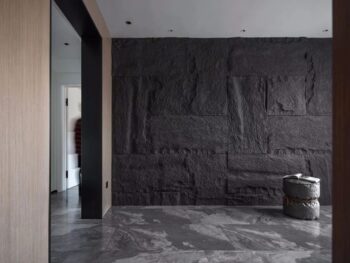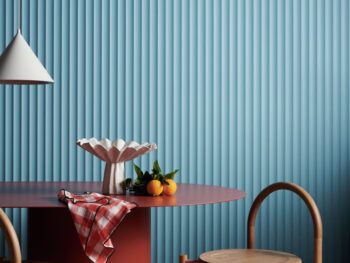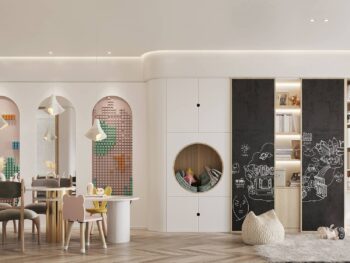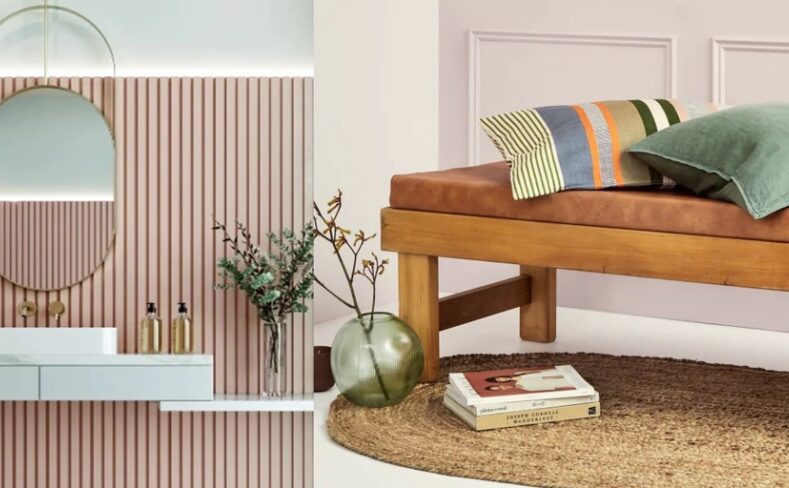
Wall Panel vs Paint Comparison
For a modern redesign of your space, you’ve successfully completed everything from rustic farmhouse-style furniture to vintage-inspired accessories; and, of course, shabby chic fabrics and mid-century modern lighting. Now, we’re going to talk about what to put on the wall.
The world of wall treatments is vast and choosing the right type of wall finish is no easy task. Most of the time, many of us are confused between two popular options—paint and siding—the former is a traditional option that has been used for a long time to cover the walls, while the latter is a relatively new concept that is increasingly being used for wall decoration.
Which one is best for decorating walls? To make your choice easier, we have shared a list of differences between the two in different parameters in advance. So, keep scrolling below and choose your ideal content wisely.
Related Articles
Wall Panel Ideas for a Beautiful Bedroom
Exploration of 2023 Bedroom Wall Panel Design
New Trends in Bedroom Wall Panel Design
I. Advantages and disadvantages of wall panels
Wall panels are a traditional form of decoration and they are made from different types of materials such as solid wood, WPC, PVC, MDF (Medium Density Fibreboard) or synthetic materials. Wall panels provide a decorative effect, adding layering and texture to the space.
Advantages
1. Decorative effect
Wall panels offer a wealth of decorative effects such as wood textures, patterns and plaids that can add unique style to a bedroom. Adds texture and depth to the room. Different types of wall panels can bring different decorative effects, from traditional to modern.
2. Protect the wall
Wall panels protect walls from daily wear and tear, reducing scratches and stains. This extends the life of the wall and reduces maintenance.
3. Sound insulation effect
Some wall panel types have soundproofing properties that can reduce noise transmission and provide a more restful sleeping environment. This is especially useful in spaces where quiet is required, such as bedrooms.
4. Warmth feeling
Wooden wall panels bring a natural warmth to bedrooms and are suitable for traditional and classic style décor. They create a cozy and welcoming atmosphere.
5. Durability
Wall panels are generally more durable and less susceptible to damage, resisting impact and wear and tear, extending the life of the wall.
6. Increase privacy
Wall panels can add privacy to a room, block views and provide privacy when needed. This is useful when dividing a space or creating a privacy space.
7. Increase home value
Homes decorated with high-quality siding are generally more attractive and can increase the market value of the home. This may be beneficial when selling or renting a property.
8. Sound absorption
Wall coverings offer certain NRC benefits (Noise Reduction Coefficient), especially if they have an embossed or embossed design. It refracts sound in multiple directions, softening noise in the space.
9. Cleanability and maintenance
Wall coverings are easy to clean and maintain and can be cleaned with bleach in many cases.
10. Light reflectivity
If you’re in a completely painted room, there may be a lot of glare in the space, but wall coverings will naturally diffuse the light and provide a softer backdrop.
Disadvantages
1. Higher cost
The cost of siding is usually higher compared to other decorative options such as paint. This includes purchasing materials and installation costs.
2. Labor-intensive
Installing siding typically requires more labor and time, so construction can be tedious.
3. Space occupation
Wall panels add thickness to the wall and therefore may take up some indoor space. This may not be the best option for a small room.
4. Difficult to change
Once the siding is installed, changing the layout or decor of the room can be more difficult because of the need to deal with refinishing the siding.
5. Limited color options
Color options for siding are relatively limited compared to paint. You usually need to choose a color at the time of purchase rather than painting as needed later.
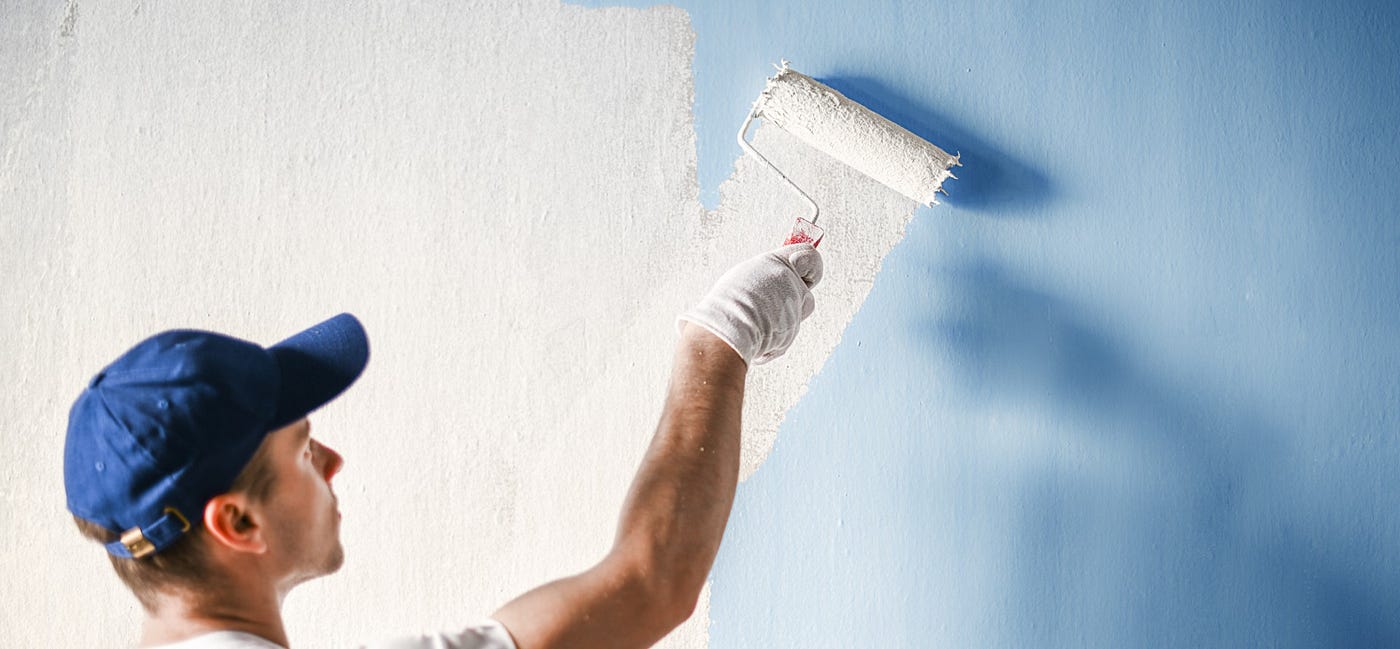
II. Advantages and Disadvantages of Paint
Compared to wall panels, paint is a simpler and more versatile way to decorate your walls. Paint offers a wide range of color options, allowing you to create a variety of different decorative effects.
Advantages
1. Wide range of color options
Paint offers a wide range of color options to suit a variety of decorating styles and personal tastes. You can easily achieve a variety of different decorative effects, including solid color, color strips, wallpaper effects, and more.
2. Simple appearance
Paint can give a room a simple, modern look, especially for those who prefer crisp and simple decor.
3. Multi-function
Paint can be used for wall decoration, furniture, doors and windows, etc. This adds consistency and a sense of unity to the design.
4. DIY friendly
Paint is a relatively easy-to-apply decorative method for those who prefer DIY. You can choose to paint the room yourself and reduce construction costs.
5. Economical and affordable
Paint is generally less expensive than other decorative options such as siding because the cost is lower and the application is relatively simple. This makes it an affordable option.
6. Decoration flexibility
Paint is great for achieving a variety of decorative effects, including solid colors, color strips, wallpaper effects, and more. You are free to create the look you want.
7. Rapid construction
Paint generally applies quickly, allowing the decoration to be completed in a shorter period of time, making the room usable more quickly.
8. Easy to maintain
Painted walls are relatively easy to maintain, and scratches or stains can be repaired relatively easily. You can always repaint to keep the room looking fresh.
Disadvantages
1. Does not provide texture and layering
Paint often doesn’t provide the same decorative texture and layering as wall paneling, making a room look uniform. If you want a specific textured effect, paint may not be the best choice.
2. Daily maintenance
Painted walls are susceptible to scratches and stains and require more frequent maintenance and repainting to maintain their appearance.
3. More fragile
Painted walls are relatively fragile and susceptible to impact and wear. This may require regular maintenance work, especially in homes with small children or pets.
4. Coverage ability
Paint may require multiple coats to fully cover some dark or irregular walls. This increases material costs and effort.
5. Contains volatile organic compounds (VOC)
Some paints contain VOCs, which can cause pungent odors and negatively impact indoor air quality. Choosing low-VOC paint can reduce this problem.
6. Preparation
Before paint can be applied, preparations such as filling cracks, repairing wall defects and covering furniture and floors to prevent paint splatters are required. This may require additional time and effort.
7. Limit creativity
Although paint provides a rich selection of colors, its decorative effect is relatively limited and cannot provide the decorative texture and layering that materials such as wall panels have.
III. Comparison table: wall panel vs paint
Parameter |
Wall Panel |
Paint |
Cost Factor |
Initial installation cost required and is a one-time investment. | Initial application cost + redo and touch-up costs |
Type |
Wider choice | There are many options, but getting intricate designs and patterns is tricky, time-consuming and expensive. |
Installation |
Simple and fast | Time consuming and confusing |
Durability |
High | Low |
Cleaning and Maintenance |
Simple | Tough, mainly depends on paint quality and after-sales service instructions. |
Waterproof, Termite-Proof, Dust-Proof, Etc. |
High | Relatively low |
Move |
Simple | Difficult |
Reusability |
Can be reused | Cannot be reused |
Application |
Kitchen, bathroom, children’s room, elderly room, commercial building, etc. | Fits any wall; except areas where walls are exposed to sunlight, humidity, humidity and heat; also suitable for high traffic areas, children’s rooms and homes with pets. |
1. Cost comparison
Wall panel
Because siding is a one-time investment and lasts longer, they are more cost-effective in the long run.
Paint
The total cost incurred for each painting job depends on various factors such as the price of supplies, type of finish, quality of paint, etc. While low-cost options exist, reapplying and touch-ups may be required frequently over time, putting a significant strain on your pocket and turning it into an expensive affair over time.
2. Diversity
Wall panel
Wall panels come in a dizzying array of designs, colours, finishes, effects and styles. As a result, they offer incredible flexibility to explore a variety of design ideas and match the existing decor of the rest of your space.
Paint
Paints are also available in a variety of colors and shades, both individually and in combinations. But creating intricate designs and patterns with paint is tricky, time-consuming and expensive as it requires hiring skilled workers to do the job.
3. Installation
Wall panel
Wall panel installation is extremely simple and straightforward, requiring less time and effort. Additionally, because the panels are dry, there is less mess during installation. For these reasons, the room is ready for immediate use once installed.
Paint
Painting walls is a tedious job as it requires you to perform multiple tasks such as covering and repairing defects (like holes, cavities, etc.), removing old coatings, applying primer, etc. Also, painting the walls is a tedious job. A mess. It will stain your floors, ceilings, windows, etc. and put an extra burden on your shoulders.
4. Durability
Wall panel
Wall panels are extremely durable and will last for years without warping or bending. Not only do they replace paint, but they also replace other wall solutions in terms of durability. There is also less wear and tear associated with these panels, so only limited maintenance is required. However, these panels are susceptible to cracking under pressure (exceeding permissible limits).
Paint
Quality paint will last for years. However, even in areas with high sun exposure, foot traffic and use, they must be redone regularly. Repainting is very difficult because you need to make sure the new can of paint exactly matches the tone and finish of your current paint.
5. Cleaning and maintenance
Wall panel
Wall panels are easy to clean and extremely low maintenance. These panels can be cleaned by simply wiping them with a damp cloth. They do not attract dust and are therefore best suited for rooms with dust allergies.
Paint
Painted walls stain easily and therefore require a lot of maintenance. This causes maintenance problems in many places, especially in homes with children and pets. In terms of maintenance, each brand has its own care instructions, and some brands even require annual touch-ups to restore the luster.
6. Resistivity
Wall panel
The wall panels are mildew-proof, termite-proof, dust-proof, and waterproof. They also prevent bacterial growth.
Paint
Paint shows relatively little resistance to all of these elements.
7. Disassembly and reuse
Wall panel
They can be easily removed and the same panels can be reinstalled in another location. Since PVC is a recyclable material, you can even take these panels to any plastic recycling facility for reuse.
Paint
Removing paint from walls is a time-consuming and laborious process.
8. Application
Wall panel
It is suitable for all interior and exterior applications in residential and commercial spaces. Due to its waterproof and dustproof properties, it is more suitable for kitchens, bathrooms, children’s rooms and elderly rooms.
Paint
While paints are suitable for any wall, they don’t work as well in areas where the wall is exposed to sunlight, humidity, humidity, and heat. It’s best to avoid using them in high-traffic areas, children’s rooms, and homes with pets, as they require a lot of maintenance.
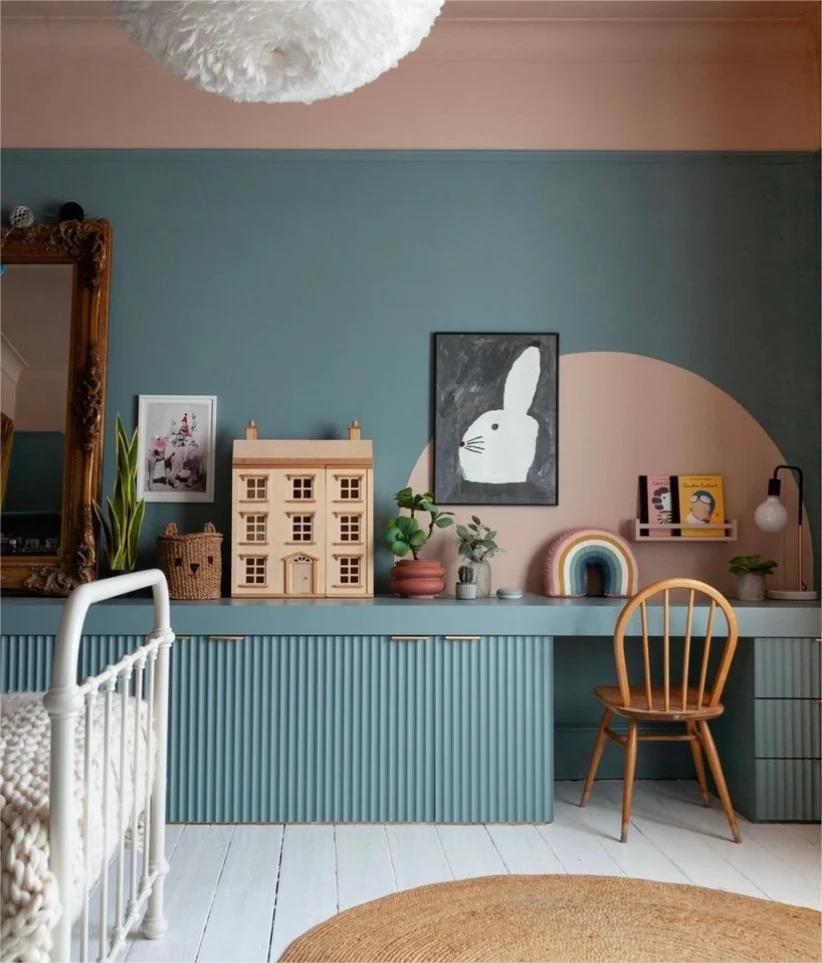
IV. Comparison between wall panels and paint: Why do we recommend you choose wall panels?
When it comes to transforming your walls, deciding between siding and paint can be a tough decision. Both options have unique advantages, but how do you decide which one is best for you? We’ll explore the pros and cons of siding and paint, focusing on siding’s advantages such as durability, texture, and design versatility. In the end, you’ll have a clearer understanding of why siding may be the best choice for a long-lasting and visually appealing finish.
1. Durability and longevity
When it comes to durability, siding leads the way. Wall panels are made from sturdy materials like wood or PVC that offer excellent resistance to scratches, dents, and everyday wear and tear.
Unlike paint, which may peel, fade, or require frequent touch-ups, siding provides a long-lasting solution that will maintain its beauty for years to come. This makes it particularly suitable for high-traffic areas or spaces prone to moisture, such as bathrooms or kitchens.
Made from Duropolymer and Purotouch, George Panel’s 3D wall panels combine lightweight construction, water resistance and exquisite design details to create a truly exceptional finish. We also offer wall panels with acoustic and thermal properties to further enhance their functionality.
2. Texture and visual appeal
Paint provides a smooth, stylish surface, while siding brings texture and depth to your walls.
Intricate patterns and designs in wall panels add visual interest and architectural appeal to any room. Whether you prefer the warmth of wood grain or the sleekness of a modern panel design, wall panels offer a variety of options to suit a variety of interior styles. The textural dimension created by the wall panels enhances the overall aesthetic of the space, leaving a lasting impression on guests.
3. Design for Versatility
Wall panels really shine when it comes to design versatility. Unlike paint, which limits you to a specific color palette or a simple one-toned finish, siding opens up a world of possibilities.
You can choose from a variety of materials and patterns to create a custom look that reflects your personal style and complements your overall design theme. From classic wood panels to modern geometric patterns, wall panels allow you to unleash your creativity and make a unique statement.
4. Application Notes
While siding offers many advantages, there are certain factors that must be considered before making a decision. Installing siding generally requires more time and effort than painting. If you’re looking for a quick and cost-effective solution, paint may be a more practical option. Additionally, if you prefer a smooth, seamless surface with no visible seams or edges, paint can provide a more uniform look. However, our wall panels are lightweight and require only adhesive to install. Additionally, our 3D wall panels are primed and ready to be painted, offering the best of both worlds in terms of siding and paint options.
When it comes to siding vs. paint, siding offers clear advantages in terms of durability, texture, and design versatility. If you want a long-lasting and visually appealing finish that adds depth and character to your walls, then wall panels are the way to go. Wall panels come in a variety of options to suit different interior styles and are designed to stand the test of time, providing a durable and visually stunning solution. However, be sure to consider your personal preferences, budget, and timeline before making a decision. Ultimately, the choice between siding and paint depends on your specific needs and desired aesthetics.
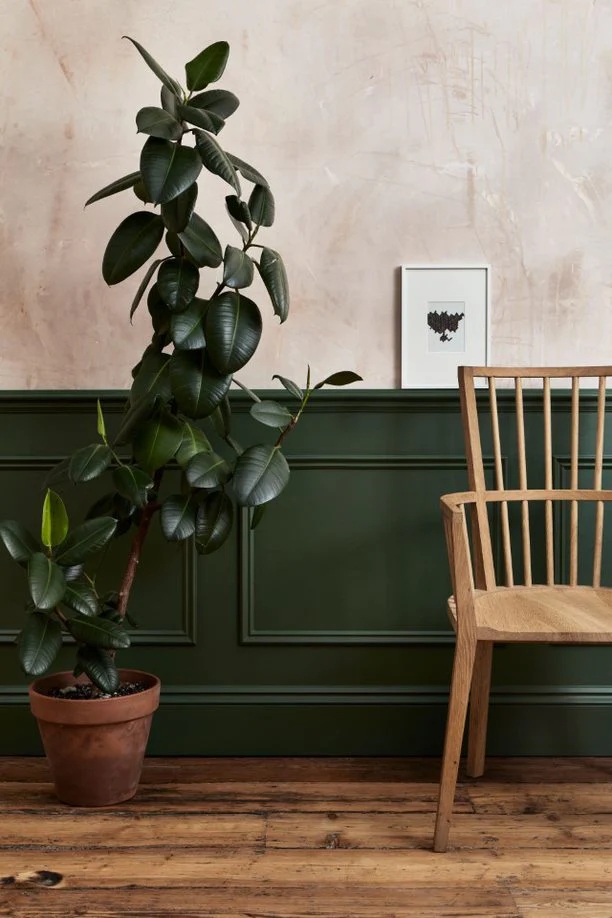
V. Is paint really the cheaper option?
Paint may seem like the cheaper option – but is it really?
Paint typically requires repainting every 18 months and repaint every three to four years. In contrast, wall coverings can easily last 10 years and may need to be replaced due to design changes rather than wear and tear.
Paint may seem like a cheaper alternative, but it’s common to multiply the cost of paint by three to four times to get a more realistic comparison to wall coverings. This results in the need for repeated repainting, which is expensive for both your budget and the environment.
VI. Conclusion
As you can see, there is a wall covering solution for every type of surface and has many benefits over using paint that will save you time and money. Our team of experts can provide guidance, so please get in touch with your project needs. Please contact us to find the best solution for your project.
Quick Quotation

